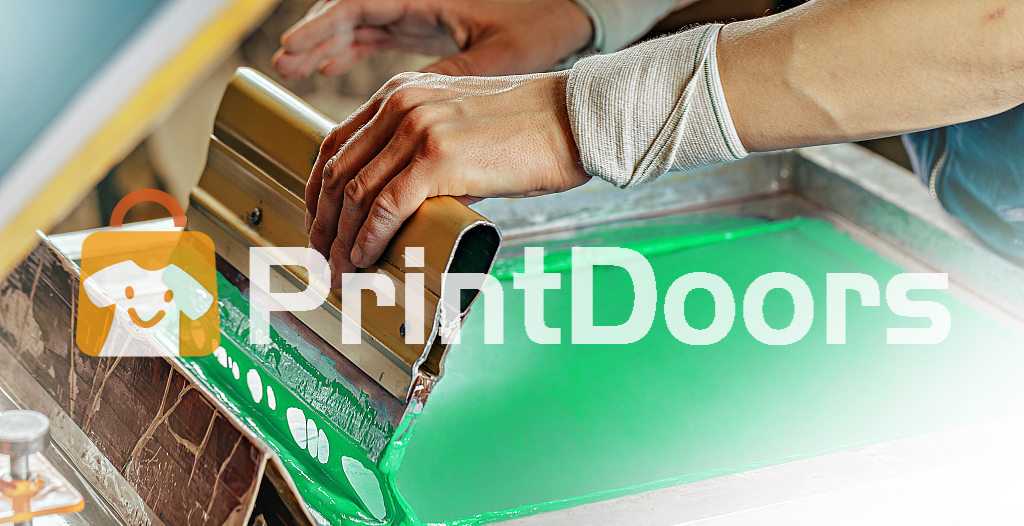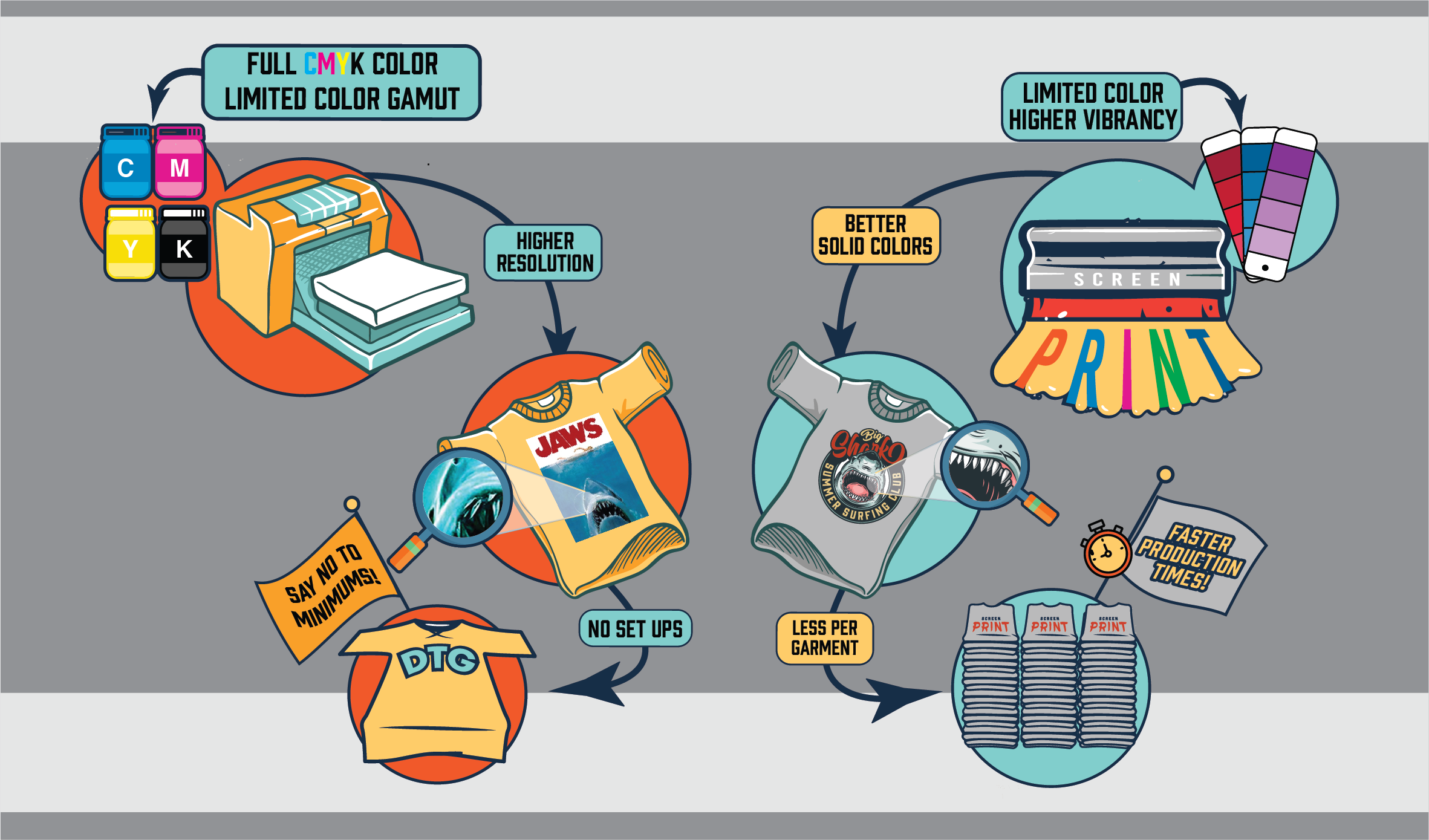What Does Tx Tees Mean?
Table of ContentsThe Tx Tees StatementsTx Tees Things To Know Before You Get ThisThe Buzz on Tx TeesThe Best Strategy To Use For Tx Tees5 Simple Techniques For Tx TeesThe Tx Tees IdeasThe smart Trick of Tx Tees That Nobody is Discussing
Add up various other expenses, like the number of utilities it takes to run the store and the cost of ink and emulsion per layout. Take the print below.The solution must just be a few cents since you 'd only require to coat one display for this work. So how much should you charge per t-shirt to make a profit? Normally, printers attempt to make up to 45% earnings on a print task. Right here's a table to aid you figure out that: complete price per thing percent of desired revenue as a decimal (instance:.25 or.45) earnings made per product per job Now let's talk regarding the earnings of DTF.

With DTF, you can publish a handful of shirts, or simply one. Utilize the very same calculator as the area above to calculate just how much profit you would certainly use DTF transfers. Contrast the prices and profits to whichever technique speaks best to your setup and procedure. Both display printing and DTF have their specific niches worldwide.
Some Of Tx Tees
The most effective way to know? Ask around and see what printing shop like your own are doing. screen printing shop. Attempt both out and see which you like better
When you're selecting what sort of printing approach to use for publishing your art work layouts on your garments, it is necessary that you understand the differences in between these two methods so you can maximize results while reducing expenses. Display printing is one of the most generally made use of strategy for publishing designs on textiles.
DTG printing is additionally called spot or direct to garment printing because it prints only what is needed instead of making a screen as display printers do. https://trello.com/u/txtees02/activity. Screen printing functions by display filler squeegee display printing ink screen mesh display, then moving the picture to garment using warmth and/or pressure
The DTG printer makes use of unique dye-sublimation inks that are applied right into a pre-designed picture by an electronic printing system. The inks become component of the material, permitting vivid colors and phenomenal detail. It's additionally referred to as place or direct to garment printing because it publishes only what is required rather of making a screen as screen printers do.
Getting The Tx Tees To Work
It's much quicker - you can publish a fullcolor photo in minutes, as opposed to hours for screen printing. Second, there's no set up time or expenses included - you can publish any kind of design you like, without having to develop a screen first. Third, there's no waste - since display printers display print one style each time, they need to screen each shade separately.
The paper is extremely costly and can only be utilized once. Once it's printed on, it has actually to be disposed of. - The first acquisition cost is less than the upfront investment of DTG printers- You can publish multi-color styles one screen each time as opposed to having to print each shade individually like DTG printing.

Tx Tees Can Be Fun For Anyone
Rather of using screen mesh as screen printers do, dye sublimation printers use laser modern technology to transfer your images onto garments or paper. A warmth process transfers the color from its solid-state straight into the gas stage which subsequently fuses it onto material substratums when they are swiftly heated up to high temperature levels under high stress.
Sublimation printing is environmentally friendly. It uses less water than screenprinting, and because it does not include using dangerous solvents, it's safe for all types of clothing. The color sublimation inks are also unsmelling when cured, unlike screen printers that make use of damaging chemicals during the display printing procedure that leave behind an undesirable smell.
They also save cash on expensive tools like direct exposure units because dye sublimation printers do not require a UV direct exposure device or a flash cure oven that is commonly utilized in screen printing (screen printer). What is direct to garment printing (DTG Printing)? DTG printing is an electronic screenprinting process that publishes directly onto material making use of specialized inkjet printers
The Ultimate Guide To Tx Tees
DTG printing supplies lots of benefits over traditional screenprinting, including the capability to print photo high quality photos, better color vibrancy, and the capacity to print designs on darker textiles. DTG printers function by heating the fabric ink until it transforms right into a gas. The gas then penetrates the material, bonding with the fibers to create an irreversible print.

Display printers merely prepare their display after that start publishing up until they lack product or ink.- There is a vast variety of experienced screen printers all over the globe, which can be valuable for novices. - It's a slower procedure - display printers often need to await the ink to completely dry before they can publish the next color- Screen printers call for manual work, so there's a higher discovering curve and it takes longer to produce a premium design- Screen printing isn't as precise as DTG printing, so you may get some "blood loss" of colors from one part of the photo onto another otherwise done effectively.
Some Ideas on Tx Tees You Should Know
Nevertheless, instead of making use of screen mesh as display printers do, color sublimation printers use laser modern technology to move your images onto garments or paper. A heat procedure transfers the dye from its solid-state straight right into the gas phase which subsequently merges it onto material substratums when they are quickly heated to high temperature levels under high stress.
Sublimation printing is green. It utilizes much less water than screenprinting, and due to the fact that it doesn't entail using harmful solvents, it's risk-free for all types of apparel. The dye sublimation inks are likewise odor free when treated, unlike screen printers that make use of hazardous chemicals throughout the display printing process that leave behind an undesirable odor.
They likewise conserve cash on pricey equipment like direct exposure devices since dye sublimation printers do not call for a UV exposure unit or a flash remedy stove that is commonly read here used in screen printing. What is straight to garment printing (DTG Printing)? DTG printing is an electronic screenprinting procedure that publishes directly onto fabric utilizing specialized inkjet printers.
Tx Tees Fundamentals Explained
DTG printing supplies numerous benefits over conventional screenprinting, including the ability to print photo quality photos, higher color vibrancy, and the capability to print layouts on darker textiles. DTG printers function by heating up the textile ink until it becomes a gas. The gas then permeates the fabric, bonding with the fibers to develop an irreversible print.